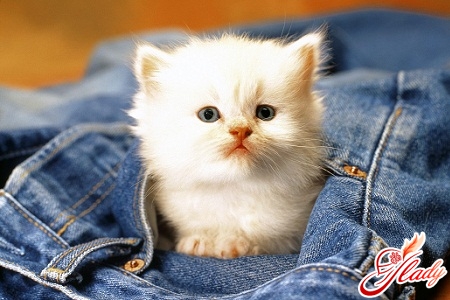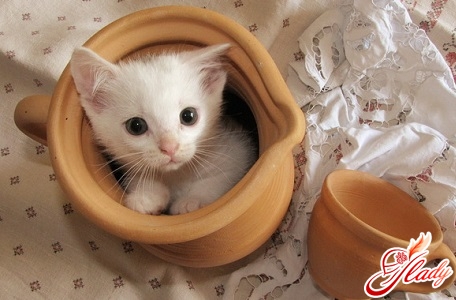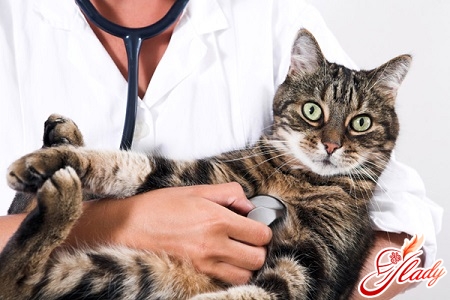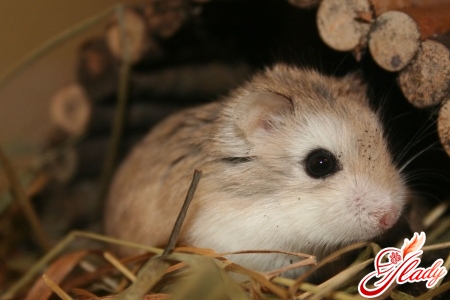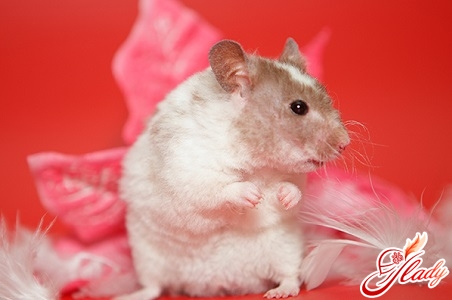 The smallest pet animals are hamsters. It is noteworthy that even a very short period of life for these kids does not detract from their popularity. After all, caring for a hamster is simple enough, and it delivers joys no less than dogs and cats that are habitual for us. Of course, the hamster will not respond to the name (even if you somehow call it), will not be happy to meet you at the door and gently purr in your lap. But he quickly gets used to the person and begins with pleasure to take a treat from hands. But the most important thing is that these babies are very interesting to watch. So, wanting to please yourself or your child with a funny pet, you can safely acquire a hamster. True, it must be remembered that it is also necessary to take care of a hamster. Species and breeds of domestic hamsters exist not too little. There are among them very small, for example, Dzungarian. There are larger species - Syrian. That's exactly about the Syrian hamsters we'll talk with today. And at the same time we learn how to care for them, what to feed and where to support.
The smallest pet animals are hamsters. It is noteworthy that even a very short period of life for these kids does not detract from their popularity. After all, caring for a hamster is simple enough, and it delivers joys no less than dogs and cats that are habitual for us. Of course, the hamster will not respond to the name (even if you somehow call it), will not be happy to meet you at the door and gently purr in your lap. But he quickly gets used to the person and begins with pleasure to take a treat from hands. But the most important thing is that these babies are very interesting to watch. So, wanting to please yourself or your child with a funny pet, you can safely acquire a hamster. True, it must be remembered that it is also necessary to take care of a hamster. Species and breeds of domestic hamsters exist not too little. There are among them very small, for example, Dzungarian. There are larger species - Syrian. That's exactly about the Syrian hamsters we'll talk with today. And at the same time we learn how to care for them, what to feed and where to support.
Description of the species
The Syrian hamster is the onlyrepresentative of a kind. This is a fairly large species for hamsters, with sizes approaching guinea pigs. The difference between a Syrian hamster is not only the size, but also the peculiar golden color of the wool. Although the last time there are also colored varieties of the Syrian hamster. But according to the type of wool, Syrian hamsters can be long-haired and short-haired. The body length of Syrian hamsters reaches thirteen centimeters, and the weight is one hundred and twenty grams. The body is stumpy, the paws and muzzle are short, and the ears are round. The eyes are black, small, resembling shiny beads. There are five toes on the front paws, and only four fingers on the rear paws, the fifth finger is rudimentary. A huge advantage of this kind of hamsters in front of others is resistance to various diseases. And this, as you know, greatly facilitates the care of hamsters. In the wild they live in Syria, Iran and eastern Turkey. Natural habitats are meadows, steppes, foothills, and also sowing lands. Syrian hamsters feed on roots, seeds, meadow grasses and insects and belong to omnivores, although belong to the family of rodents. Representatives of this species live alone, forming pairs only during the rut (time for the continuation of the genus). Strictly speaking, all this determines the requirements for the content, as well as care for the Syrian hamster at home. 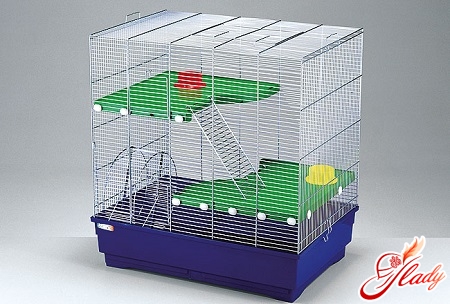
Conditions of detention
If you are not going to breedhamsters, it is best to buy one animal, since with the relatives the Syrians get along with difficulty, and even do not tolerate forced neighborhood. The most suitable dwelling for this animal will be a cage with metal rods measuring forty by sixty centimeters. Suitable and aquarium of the same size. The cage must necessarily be equipped with additional accessories and have a comfortable and safe for the animal litter. As litter, special fillers or pressed sawdust can be used. In no case can the floor of the cell be covered with scraps of newspapers or toilet paper, cotton, cloth and napkins. And additional equipment for the cell will need the following:
- a special toilet for small rodents, which can be purchased at a pet store or manufactured independently;
- wheel of suitable size with a bottom without a lattice and with transverse stepped protrusions;
- A drinking bowl with a volume of at least fifty milliliters;
- a house attached to the wall, which will become a place for storing supplies;
- a feeder measuring up to ten centimeters;
- Stairs, branches, perches and dry roots, which will serve as a kind of simulators for this active animal.
By the way, today you can buy completelyequipped cage, equipped with all necessary accessories. And you can independently equip your pet's dwelling with all the additional devices.
Hygiene
The main hygienic care for a hamster is reduced toperiodic cleaning of the cell, which is carried out about once every five days. The hamster is planted at the time of harvesting, and the cage is washed with a safe disinfectant. At the same time, the litter is also changed. Once a month the cage is necessarily washed with means containing chloric lime, after which it is thoroughly rinsed and wiped dry. Do not forget that from time to time you need to wash and all the items of the hamster's use, and you should clean it every day. Special care for a Syrian hamster is not needed, because he can take care of himself. If necessary, you just need to comb and clean the fur. The soiled wool is subjected to dry cleaning, wiping it with a soft cloth, paper napkin or a handkerchief. They bathe Syrian hamsters only in exceptional cases, but it's better not to do it, so during the water procedures the hamster can experience stress or overcool and get sick. If such a need arises, then the animal is bathed under a stream of warm water, leaving a dry head and a muzzle. To wash the baby should be very carefully and very quickly, and immediately after bathing it is necessary to dry the fur with a hair dryer. It is necessary to monitor the health of the animal. The first symptoms of diseases can be:
- slightly wet to the touch, fur,
- liquid stool,
- apathetic condition of the animal,
- severe or shortness of breath;
- formation of wounds and ulcers on the skin;
- the appearance of fleas or lice,
- loss of fur;
- manifestation of aggression.
In all these cases it is necessary to refer toveterinarian. But if you will properly care for the animal, then all diseases are likely to bypass it. After all, as we have already said, these rodents are very resistant to diseases. 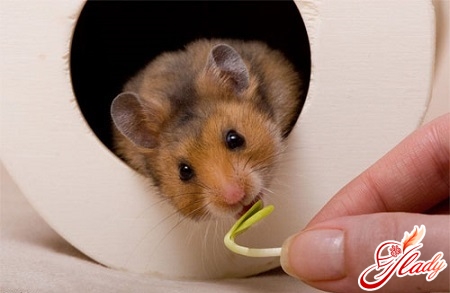
Feeding
Proper care for a hamster means competentlymake a menu and on time to feed your pet. Syrian hamsters are omnivorous. However, this does not mean that you can feed them anything. This means that animals can and should be given animal and vegetable food. In the wild, a Syrian hamster feeds on plant seeds, roots, green grasses and small insects. At home, maintaining exactly the same diet is not necessary. Your hamster will do without insects and it will be fun to eat sunflower seeds, root vegetables, fruits and greens. Therefore, in the diet of the animal must include:
- pumpkin seed and sunflower seeds;
- apples,
- radish,
- zucchini,
- pumpkin,
- carrot,
- pears,
- persimmon;
- greenery.
Prohibited products for these animals: nuts, citrus, lard, butter, sour cream, kefir, sweets, cabbage. Remember that a hamster prefers juicy food, and do not stuff it with exceptionally dry mixtures. Although such cereal mixtures to hamsters are certainly useful, especially if they are enriched with vitamin supplements. Grass hamster uses exclusively in green form - dry grass it uses to build a nest. So hay is not food for a hamster, but a building material for his house. Naturally, food should always be fresh. By the way, the hamster likes to make reserves, which, in time, can start to deteriorate. Therefore, from time to time, check his bins, but do not ruin them completely. And remember that a Syrian hamster is predisposed to obesity. Therefore, feed the animal only twice a day - in the morning and in the evening. As you can see, taking care of these funny kids is actually quite simple. There are practically no shortcomings with them except for a very short period of life, which does not exceed three years. However, even in this short period, the life and health of the baby is completely in your hands. And however miniaturized and unpretentious he may be, remember that you are responsible for those who have tamed.




